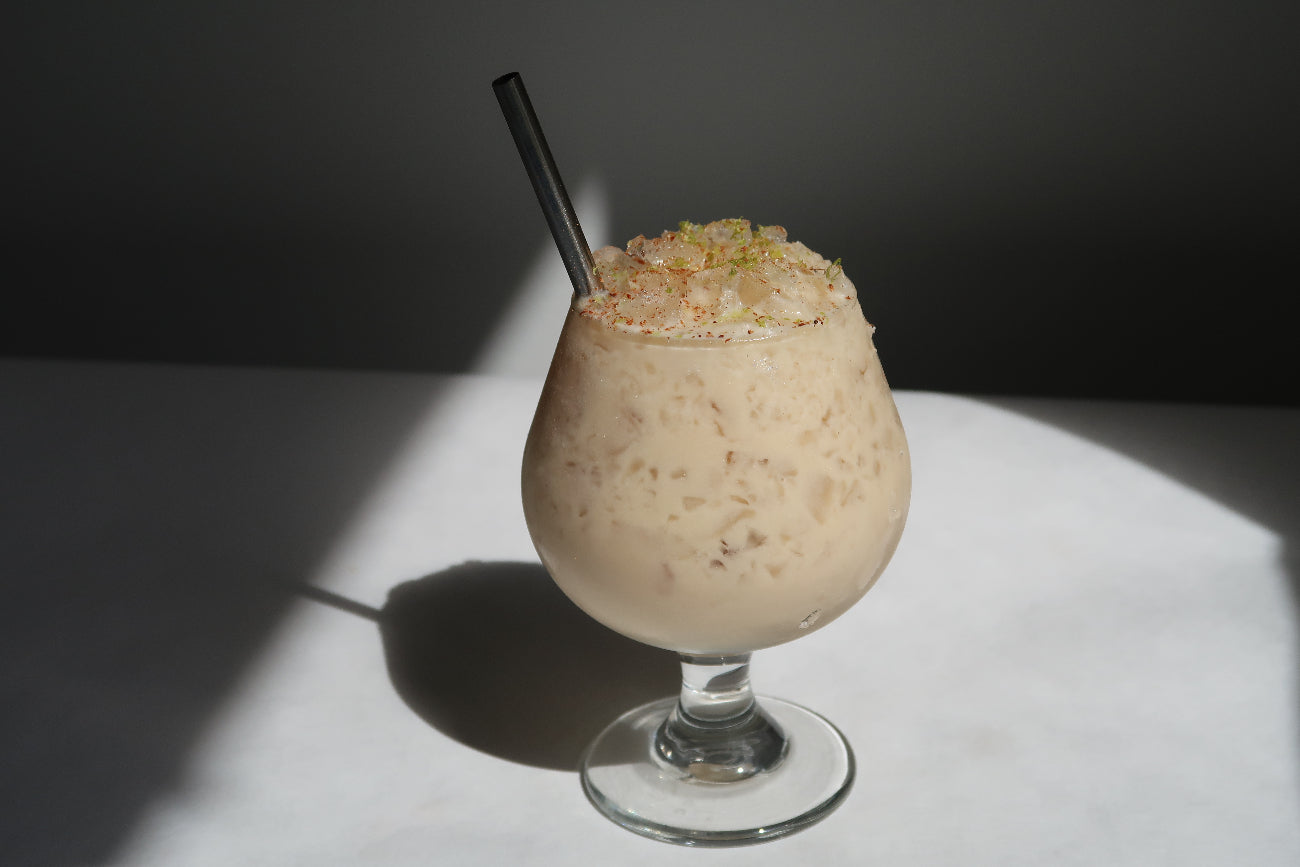We're exploring twelve seasonally-inspired cocktail recipes this year alongside our candle subscription with writer, historian, and cocktail creative Al Culliton.
Simple & Non-alcoholic Versions: Here
New to cocktail making?
Read our Drinks101 post first.
When I was a young medievalist studying the visual language of the European Middle Ages, I was captivated by the Labors of the Month. Like many before me, I thought, “What a relief it would be to live in such a simple world, to know just what had to be done at any given time of year, and to do it.” In the years since, I have realized just how terribly uncomfortable and harrowing that period of time would have been. I also can’t fathom the amount of physically taxing labor people were doing just to keep themselves and their communities sustained. But a few of the Labors still make me smile and think, “How charming!” while I practically leap for the nearest time machine. Chief among these is November’s classic Labor: driving swine into the woods so they can feast on acorns.

Manuscript origin unknown, possibly German or Flemish, likely 14th century. Source: pinterest.com/pin/437130707573069872/
These November scenes typically show a swineherd hitting an oak tree with a stick to shake the acorns loose, with the hogs eating acorns off the forest floor. Herding dogs are often depicted, too, as they’re invaluable to herders of all stripes. For the pigs, it’s a final, pleasurable meal before the animals are slaughtered in December, broken down, and cooked for the feasting season (Christmas Day through January). Some cuts would have been preserved with salt and aged, to be enjoyed later on in the winter. In France, Spain, and Italy, acorn-fed ham is a traditional delicacy still produced to this day.

November calendar page, Très Riches Heures du Jean Duc de Berry, 15th century, France. Source: https://www.getdailyart.com/17670/tres-riches-heures:-november
As with many of the Labors of the Month we’ve studied this year, the fattening of livestock ahead of slaughtering season ensures sustenance in the months to come. This month’s Keap theme is reading, learning, and beginning. To me, the word “beginning” denotes the journey we set out on when we tackle a new book, new subject, or new passion. Reading and learning have the same spirit of working to store up something valuable — in this case, knowledge — that will sustain us in the future.

Last month, we prepared a punch-like cocktail that leaned into the classic flavors of fall. This month, however, we’re seeking an escape from the shorter days that come in November. In our Palma cocktail, rye and oloroso sherry form the base, which is then layered with Mezcal, amaro, lime juice, half and half, and coconut. The resulting drink brings smoky, nutty, and bitter flavors to a tropical format, served over a mound of crushed ice and garnished with lime zest and cinnamon. Whether you serve alongside pie on Thanksgiving or make it for a friend on a Thursday night, it’s sure to transport you from the oak trees of the forest and evoke the coconut palms of the tropics.


Palma
An Alexander-meets-a tiki drink, with rye, amaro, sherry, a small measure of Mezcal, coconut creamer, and cinnamon; a creamy, tropical riff on the classic, with grounding flavors fit for fall weather.
- 1 oz. rye whiskey
- 1 oz. oloroso sherry
- ¾ oz. amaro
- ¾ oz. lime juice
- ¾ oz. half & half
- ¼ oz. Mezcal
- 1 tablespoon cream of coconut
- Cinnamon, for garnish
- Lime zest, for garnish
Combine ingredients in a shaker, shake vigorously for 10 seconds to chill, double strain (through Hawthorne and fine mesh strainers) into a small snifter or Keap tumbler. Add a short straw and fill glass with crushed or pebble ice. Garnish with freshly grated cinnamon and lime zest.

Drinks 101
Dairy in Drinks History
Milk and cream have a long history in drinks. In the medieval period, posset was a popular beverage — a mixture of wine, sherry, and/or ale with cream or milk, and often thickened with eggs, almonds, or grains. Its cousin, the syllabub, was a similar concoction, but whereas posset was prepared through a cooking process, syllabub was simply prepared at room temperature and agitated or whisked to thicken. If these sound familiar, it’s probably because these are the ancestors of eggnog and Tom & Jerry, two classic holiday drinks in the United States. After the Cocktail took hold of the American imagination in the nineteenth century, cream popped up in many recipes. Perhaps the two most famous are the Ramos Gin Fizz, which hails from New Orleans, and the Brandy Alexander, a drink that gained popularity in the years immediately preceding Prohibition.

THIS MONTH'S SIMPLER RECIPE
Looking for a simpler twist or a non-alcoholic option?
Simple recipe: In a shaker, combine 2 oz. rye, 4 oz. pineapple juice, 1 oz. lime juice, 1 oz. cream of coconut. Add plenty of ice. Shake vigorously for 15 seconds. Strain into a Collins glass over fresh ice. Garnish with nutmeg or cinnamon and a pineapple wedge.
Non-alcoholic version: In a shaker, combine 4 oz. pineapple juice, 1 oz. lime juice, 1 oz. cream of coconut. Add plenty of ice. Shake vigorously for 15 seconds. Strain into a Collins glass over fresh ice. Garnish with nutmeg or cinnamon and a pineapple wedge.














